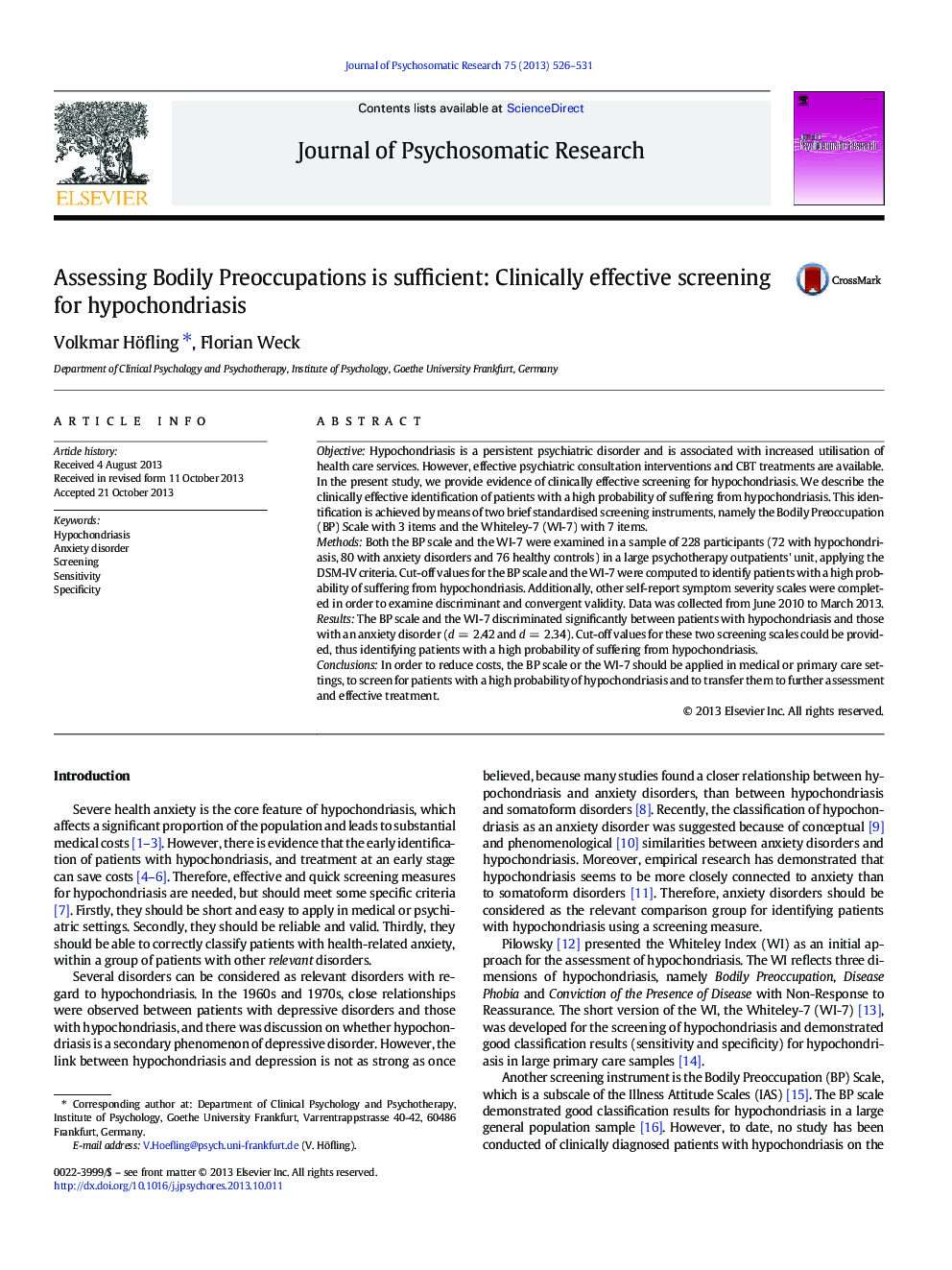| Article ID | Journal | Published Year | Pages | File Type |
|---|---|---|---|---|
| 949462 | Journal of Psychosomatic Research | 2013 | 6 Pages |
ObjectiveHypochondriasis is a persistent psychiatric disorder and is associated with increased utilisation of health care services. However, effective psychiatric consultation interventions and CBT treatments are available. In the present study, we provide evidence of clinically effective screening for hypochondriasis. We describe the clinically effective identification of patients with a high probability of suffering from hypochondriasis. This identification is achieved by means of two brief standardised screening instruments, namely the Bodily Preoccupation (BP) Scale with 3 items and the Whiteley-7 (WI-7) with 7 items.MethodsBoth the BP scale and the WI-7 were examined in a sample of 228 participants (72 with hypochondriasis, 80 with anxiety disorders and 76 healthy controls) in a large psychotherapy outpatients' unit, applying the DSM-IV criteria. Cut-off values for the BP scale and the WI-7 were computed to identify patients with a high probability of suffering from hypochondriasis. Additionally, other self-report symptom severity scales were completed in order to examine discriminant and convergent validity. Data was collected from June 2010 to March 2013.ResultsThe BP scale and the WI-7 discriminated significantly between patients with hypochondriasis and those with an anxiety disorder (d = 2.42 and d = 2.34). Cut-off values for these two screening scales could be provided, thus identifying patients with a high probability of suffering from hypochondriasis.ConclusionsIn order to reduce costs, the BP scale or the WI-7 should be applied in medical or primary care settings, to screen for patients with a high probability of hypochondriasis and to transfer them to further assessment and effective treatment.
